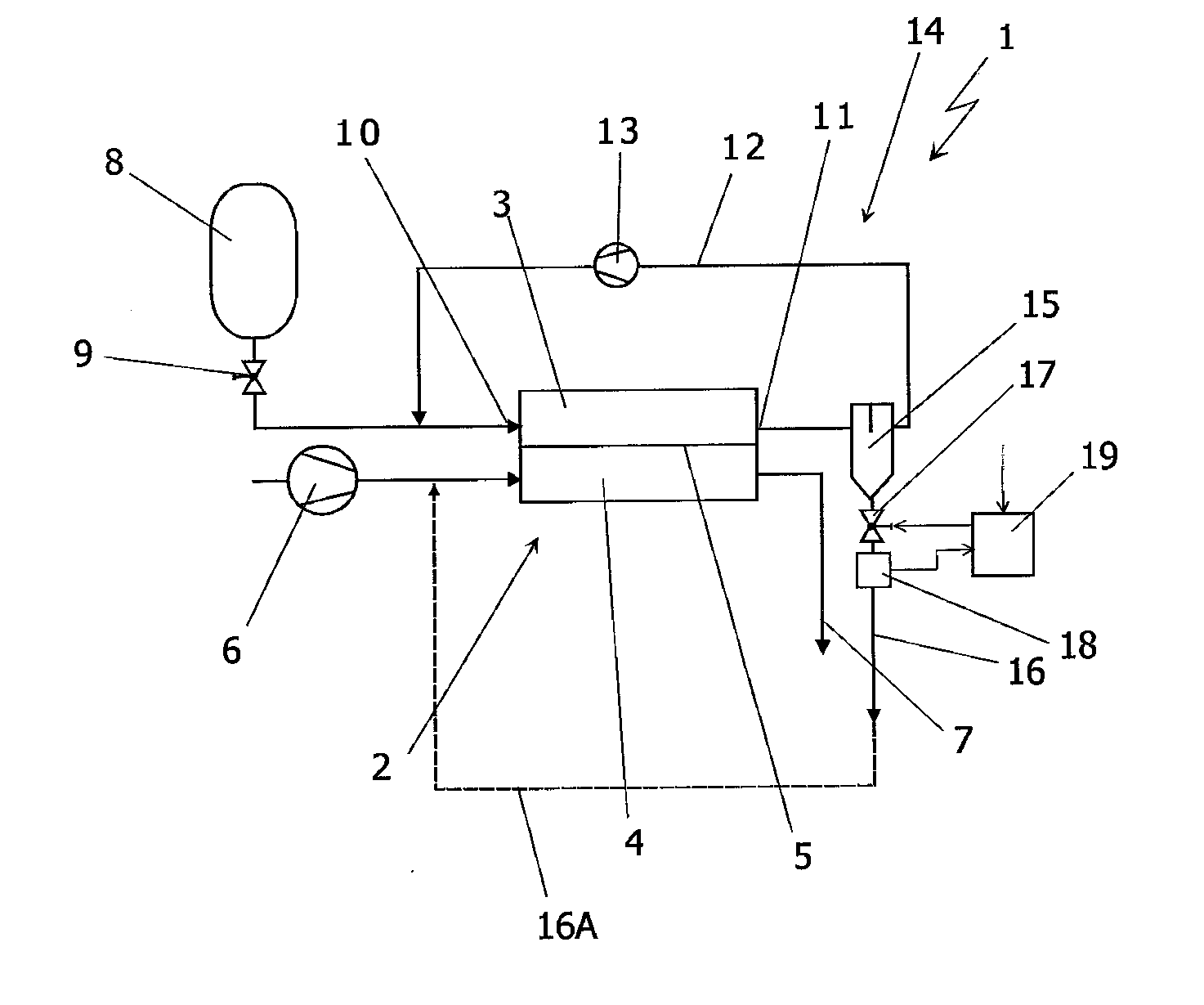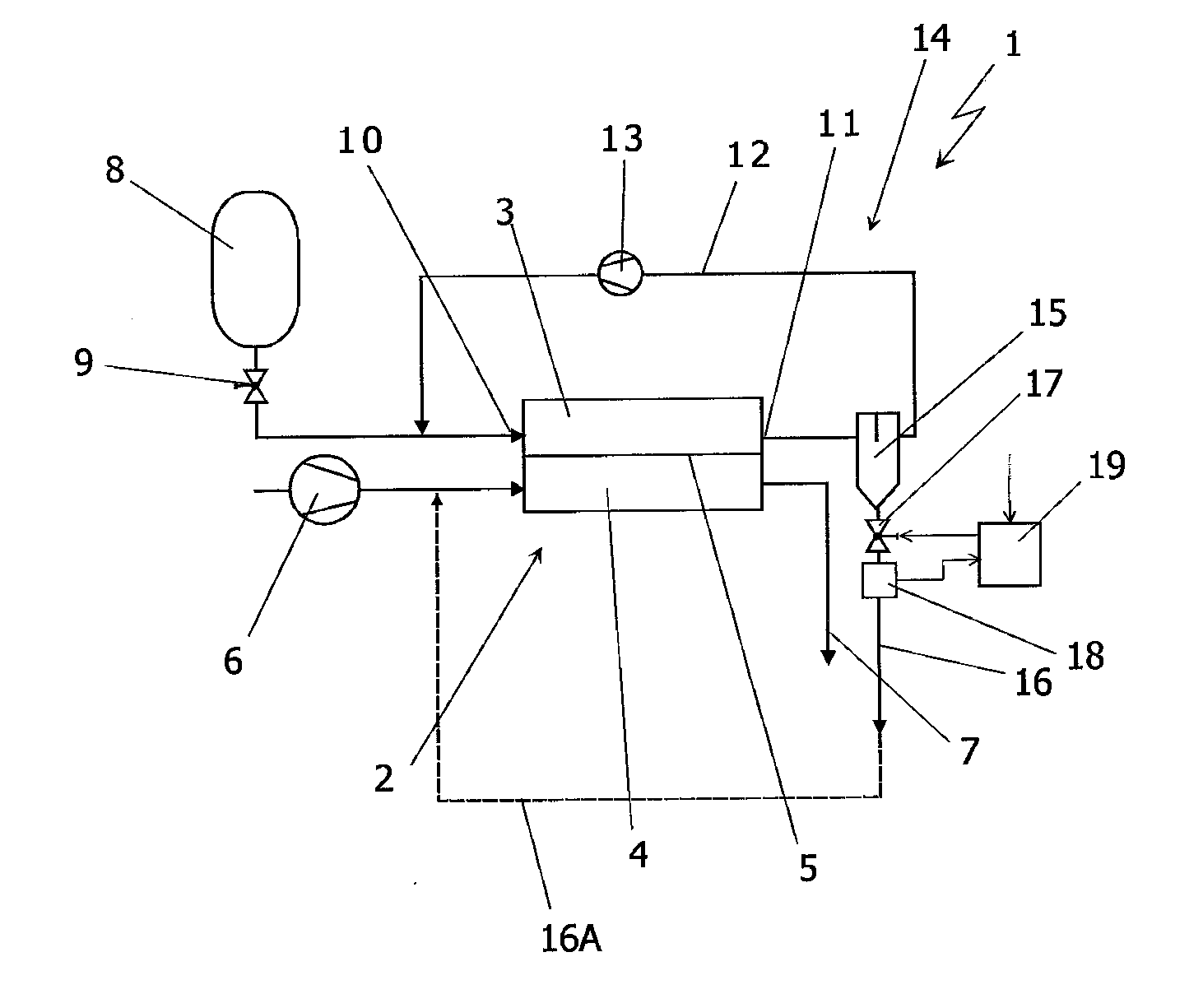Recirculation Unit For a Fuel Cell System
a fuel cell and recirculation unit technology, applied in the direction of fuel cells, liquid degasification regulation/control, electrical devices, etc., can solve the problems of reducing hydrogen concentration, level sensors, and pronounced tendency to contamination, and achieves simple and cost-effective design, easy and cost-effective realization and implementation, and minimize repairs and services.
- Summary
- Abstract
- Description
- Claims
- Application Information
AI Technical Summary
Benefits of technology
Problems solved by technology
Method used
Image
Examples
Embodiment Construction
[0024]The sole FIGURE schematically illustrates a fuel cell system 1. The core of this fuel cell system 1 is a fuel cell 2, which is designed as a stack of individual fuel cells, referred to as a so-called fuel cell stack. The fuel cell 2 includes an anode region 3 and a cathode region 4 separated from one another by a proton-conducting membrane 5. The fuel cell 2 is accordingly a PEM fuel cell. The cathode region 4 of the fuel cell 2 is supplied, via an air conveying device 6, with filtered air as an oxygen-containing medium. Spent exhaust air passes from the fuel cell system 1 via an exhaust air line 7. The exhaust air may be discharged to the environment, expanded through a turbine, and / or supplied to combustion. However, this is not significant for the invention.
[0025]The anode region 3 of the fuel cell 2 is supplied with hydrogen from a compressed gas store 8 via a valve and pressure regulation device 9. The fresh hydrogen flows through a supply line to the inlet 10 of the anod...
PUM
| Property | Measurement | Unit |
|---|---|---|
| area | aaaaa | aaaaa |
| time | aaaaa | aaaaa |
| distance | aaaaa | aaaaa |
Abstract
Description
Claims
Application Information
 Login to View More
Login to View More - R&D
- Intellectual Property
- Life Sciences
- Materials
- Tech Scout
- Unparalleled Data Quality
- Higher Quality Content
- 60% Fewer Hallucinations
Browse by: Latest US Patents, China's latest patents, Technical Efficacy Thesaurus, Application Domain, Technology Topic, Popular Technical Reports.
© 2025 PatSnap. All rights reserved.Legal|Privacy policy|Modern Slavery Act Transparency Statement|Sitemap|About US| Contact US: help@patsnap.com


